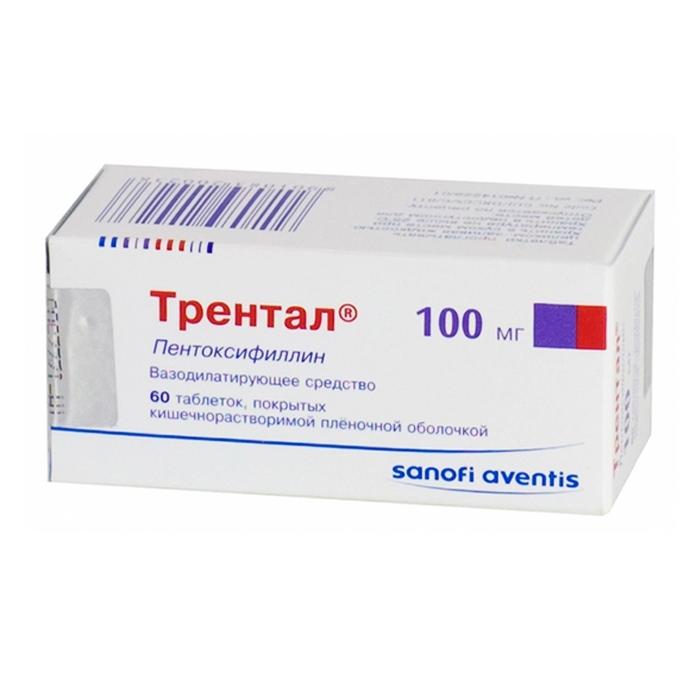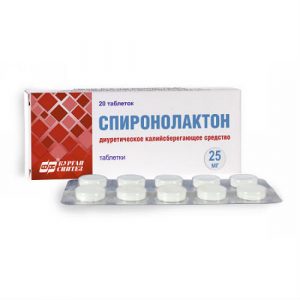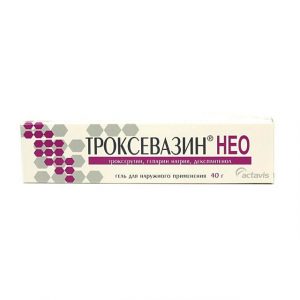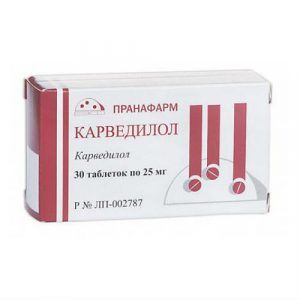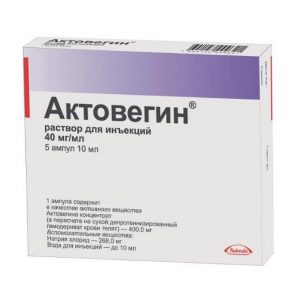Description
Latin name
TRENTAL
Release form
Enteric-coated film-coated tablets.
Packaging
60 per pack .
Pharmacological action
Pharmacodynamics
A drug that improves microcirculation, angioprotector, xanthine derivative. Trental improves the rheological properties of blood (fluidity) due to the effect on the pathologically altered deformability of red blood cells, inhibiting platelet aggregation and reducing high blood viscosity. Improves microcirculation in areas of impaired circulation.
The mechanism of action of pentoxifylline is associated with the inhibition of phosphodiesterase and the accumulation of cAMP in the smooth muscle cells of blood vessels and blood cells.
Having a weak myotropic vasodilating effect, pentoxifylline somewhat reduces OPSS and slightly dilates the coronary vessels.
Treatment with Trental improves the symptoms of cerebrovascular accidents.
The success of treatment with occlusive lesions of the peripheral arteries (for example, intermittent claudication) is manifested in lengthening the walking distance, eliminating night cramps in the calf muscles and the disappearance of pain at rest.
Pharmacokinetics
Absorption
After oral administration, pentoxifylline is almost completely absorbed from the gastrointestinal tract.
Bioavailability averages 19%.
Metabolism
The main pharmacologically active metabolite of 1- (5-hydroxyhexyl) -3,7-dimethylxanthine is determined in plasma at a concentration exceeding 2 times the concentration of unchanged substance, and is in a state of reversible biochemical equilibrium with it. For this reason, pentoxifylline and its metabolite should be considered as an active whole, therefore, we can assume that the bioavailability of the active substance is significantly higher. Pentoxifylline is completely biotransformed in the body.
Excretion of
T1 / 2 of pentoxifylline is 1.6 hours.
More than 90% is excreted by the kidneys as unconjugated, water-soluble polar metabolites.
Pharmacokinetics in special clinical cases
In patients with severe impaired renal function, the excretion of metabolites is slowed down.
In patients with impaired liver function, an extension of T1 / 2 of pentoxifylline and an increase in its bioavailability were noted.
Indications
Peripheral circulatory disorders of atherosclerotic origin (e.g. intermittent claudication)
diabetic angiopathy
trophic disorders (e.g. lower leg ulcers, gangrene)
cerebrovascular accidents, such as cerebrospinal disorders, such as cerebrospinal disorders, such as cerebrospinal disorders, e.g. memory impairment)
ischemic and post-stroke conditions
circulatory disorders in the retina and choroid
otosclerosis
degenerative changes due to vascular pathology of the inner ear and hearing loss.
Contraindications
Hypersensitivity to the components of the
drug massive bleeding
extensive retinal hemorrhage
cerebral hemorrhage
acute myocardial infarction
age up to 18 years old mr pregnancy and other pregnancy and other pregnancy.
Caution should be used in patients with: severe cardiac arrhythmias (risk of worsening arrhythmias), arterial hypotension (risk of further decrease in blood pressure), chronic heart failure, with peptic ulcer of the stomach and duodenum, impaired renal function – CC less than 30 ml / min (the risk of cumulation and an increased risk of side effects), with severe impaired liver function (the risk of cumulation and an increased risk of side effects), an increased tendency to bleeding, including as a result of the use of anticoagulants or with violations of the blood coagulation system (risk of developing more severe bleeding), after recently undergoing surgical interventions.
Use during pregnancy and lactation
The drug is contraindicated in pregnancy.
If you need to use the drug during lactation, you should stop breastfeeding.
Composition
1 tablet contains:
Active substances: pentoxifylline 100 mg.
Excipients: lactose, starch, talc, colloidal silicon dioxide, magnesium stearate.
Shell composition: methacrylic acid copolymer, sodium hydroxide, macrogol (polyethylene glycol) 8000, talc, titanium dioxide (E171).
Dosage and administration
Dose is set individually, in accordance with the characteristics of the patient.
The drug is administered orally at 100 mg (1 tab.) 3 times / day, followed by a gradual increase in dose to 200 mg 2-3 times / day. The maximum single dose is 400 mg. The maximum daily dose is 1200 mg. The tablets should be swallowed whole during or immediately after a meal with a sufficient amount of water.
In patients with impaired renal function (CC less than 30 ml / min), the dose should be reduced to 1-2 tablets / day.
In patients with severely impaired liver function, a dose reduction is necessary taking into account the individual tolerance of the drug.
In patients with low blood pressure, as well as in individuals at risk due to a possible decrease in blood pressure (patients with severe coronary artery disease or with hemodynamically significant stenosis of the cerebral vessels), treatment can be started in small doses, in these cases the dose should be increased gradually.
Side effects
From the central nervous system: headache, dizziness, anxiety, sleep disturbances, convulsions very rarely – aseptic meningitis.
Dermatological reactions: flushing of the face, flushing of the face and upper chest, swelling, increased fragility of the nails.
From the digestive system: xerostomia, anorexia, intestinal atony, a feeling of pressure and overflow in the stomach, nausea, vomiting, diarrhea in some cases – intrahepatic cholestasis and increased activity of hepatic transaminases (AST, ALT), alkaline phosphatase.
From the cardiovascular system: tachycardia, arrhythmia, cardialgia, progression of angina pectoris, decreased blood pressure.
From the hematopoietic system: leukopenia, thrombocytopenia, pancytopenia, bleeding from blood vessels of the skin, mucous membranes, stomach, intestines, hypofibrinogenemia.
From the side of the organ of vision: visual impairment, scotoma.
Allergic reactions: itching, flushing of the skin, urticaria, angioedema, anaphylactic shock.
Side effects are possible with Trental in high doses.
Drug Interaction
Pentoxifylline is able to potentiate the effects of drugs that reduce blood pressure (ACE inhibitors, nitrates).
Pentoxifylline can increase the effect of drugs that affect the blood coagulation system (indirect and direct anticoagulants, thrombolytics), antibiotics (including cephalosporins).
Cimetidine increases the concentration of pentoxifylline in plasma (risk of side effects).
Co-administration with other xanthines can lead to excessive nervous excitation.
Increased hypoglycemic effects of insulin or oral hypoglycemic agents with pentoxifylline (increased risk of hypoglycemia). If combination therapy is required, strict monitoring of the patient’s condition is required.
In some patients, concomitant administration of pentoxifylline and theophylline may lead to increased plasma concentrations of theophylline. This can lead to an increase or increase in the side effect associated with theophylline.
Overdose
Symptoms: nausea, dizziness, tachycardia, decreased blood pressure, arrhythmia, hyperemia of the skin, chills, loss of consciousness, areflexia, tonic-clonic convulsions.
Treatment: Symptomatic therapy is carried out if necessary. The patient should be given a horizontal position with legs raised. The specific antidote is unknown. They monitor the vital functions of the body and general activities aimed at maintaining them, monitor the patency of the respiratory tract. In convulsions – diazepam.
Storage conditions
Store in a dry place at a temperature not exceeding 25 ° C.
Keep out of the reach of children.
Expiration
4 years.
Deystvuyuschee substances
Pentoxifylline
pharmacy terms for prescription
dosage form
dosage form
tablets
Sanofi India Ltd, India
